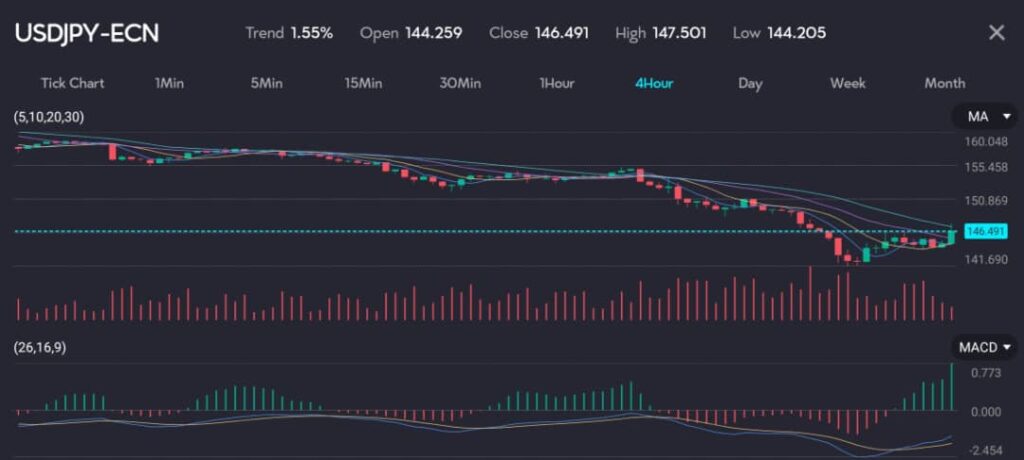Key points:
- Dollar steady, yen fluctuates amid rate cut speculations.
- Yen’s recent movements were influenced by interventions and a hawkish Bank of Japan.
The dollar held its ground on Wednesday, while the yen retreated from a seven-month peak. Currency markets stabilised after a turbulent start to the week driven by recession fears and the unwinding of carry trades.

See: Japanese yen declines as seen on the VT Markets app.
The yen dropped by 1% to 146.43 per dollar, moving away from its high of 141.675 reached on Monday. Despite this dip, the yen has risen by 3% in August and is well above the 38-year low of 161.96 from early July.
Investor caution rises with policy shifts and economic uncertainty
Timely interventions from Tokyo in early July and a hawkish shift from the Bank of Japan last week prompted investors to exit carry trades, where they borrowed yen at low rates to invest in dollar-denominated assets for higher returns.
Market volatility increased with a weaker-than-expected U.S. job report on Friday and disappointing earnings from major tech firms, triggering a global sell-off of riskier assets amid fears of a U.S. recession.
Recent shifts in yen positioning are among the largest on record, with 65% of yen shorts now covered as of August 6. Although some JPY shorts remain, USD/JPY volatility may decrease.
Euro and sterling hold steady as dollar index inches higher
On Wednesday, the euro remained stable at $1.092675, while sterling last traded at $1.26985, close to its five-week low from the previous session. The U.S. dollar index, which measures the dollar against six major rivals, eased to 102.94, up from its seven-month low of 102.15 on Monday.
Also read: EURUSD rallies on weak US jobs data: Best day since November 2023
Market anticipates Fed rate cuts after soft jobs report
Following last week’s soft jobs report, traders adjusted their expectations for the Federal Reserve’s actions this year. The market now anticipates 105 basis points of easing by year-end. The Fed likely seeks reaffirmation of trends from several data points before drawing conclusions, contrasting with the market’s quick reaction to the recent NFP print.
The dollar is expected to regain some recent losses over the next three months, based on the belief that markets have overestimated the number of rate cuts this year.
You might be interested: Week ahead: Heightened volatility despite stable Fed rates
In other currencies, the Australian dollar increased by 0.24% to $0.6534 after the central bank ruled out the possibility of an interest rate cut this year, citing slow reduction in core inflation. Despite this, the Aussie hit an eight-month low on Monday amid the global market meltdown.
Similarly, the New Zealand dollar rose by 0.74% to $0.5998 following robust jobs data, reflecting a more optimistic outlook for the currency.
Start trading now — click here to create your live VT Markets account.









